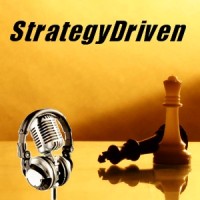Recommended Resource – Reviving Work Ethic
Reviving Work Ethic: A Leader’s Guide to Ending Entitlement and Restoring Pride in the Emerging Workforce
by Eric Chester
About the Reference
Reviving Work Ethic by Eric Chester provides actionable methods organization leaders can employ to instill within their young workers the strong work ethic foundational to America’s market success. He begins by categorizing young workers on a cognizance and compliance scale; later revealing what leaders must do to imbue workers within each quadrant with a strong work ethic. Eric clearly defines this target ethic as being comprised of a positive attitude, reliability, professionalism, initiative, respect, integrity, and gratitude. He closes by highlighting the value proposition of a workforce characterize by a strong work ethic.
Benefits of Using this Reference
StrategyDriven Contributors like Reviving Work Ethic because of the actionable insights provided to imbue workers with a strong work ethic. Unique to this writing is the cognizance and compliance matrix that provides an excellent starting point from which leaders can specifically tailor their actions to individual employees. We further appreciate Eric’s deliberate definition and influencing actions associated with each aspect of work ethic. His attention to defining work ethic, employee conversation starters, action tips, and work ethic value proposition tables, contribute to the completeness of this book and make it ideal for new and experience leaders alike.
If we had one criticism of Reviving Work Ethic it would be Eric’s singular focus on new workers. StrategyDriven Contributors believe to varying degrees and for differing reasons workers of all ages and experience levels have a sense of entitlement. Furthermore, we believe workers from all generations can be found in each quadrant of Eric’s cognizance-compliance matrix. Thus, while we agree younger workers may be more easily influenced, we feel it is a leader’s responsibility to attempt to instill a strong work ethic within all workers and to take appropriate action to hold those accountable who do not demonstrate these desirable characteristics.
A strong work ethic is critical to individual and organizational success. Leaders must act to imbue their subordinates with these admirable characteristics. Because of its clarity and immediately actionable methods to instill a strong work ethic within workers, Reviving Work Ethic is a StrategyDriven recommended read.


 Culture is hard to quantify but its impact on business operations is unmistakable. Even the well-conceived strategy cannot withstand the onslaught of a counter focused culture. In order for a strategy to be implementable, it must be formulated to work within the confines of the corporate culture. Alternatively, the corporate culture must be changed before the strategy is implemented… typically a years long process.
Culture is hard to quantify but its impact on business operations is unmistakable. Even the well-conceived strategy cannot withstand the onslaught of a counter focused culture. In order for a strategy to be implementable, it must be formulated to work within the confines of the corporate culture. Alternatively, the corporate culture must be changed before the strategy is implemented… typically a years long process. StrategyDriven Podcasts focus on the tools and techniques executives and managers can use to improve their organization’s alignment and accountability to ultimately achieve superior results. These podcasts elaborate on the best practice and warning flag articles on the StrategyDriven website.
StrategyDriven Podcasts focus on the tools and techniques executives and managers can use to improve their organization’s alignment and accountability to ultimately achieve superior results. These podcasts elaborate on the best practice and warning flag articles on the StrategyDriven website.
 Ed has worked in more than 40 countries with organizations including Booz Allen Hamilton, Satyam, Seer Technologies, National Australia Bank, Larson & Toubro and the World Economic Forum. He is the only Chief Learning Officer to lead two companies to ASTD BEST Award #1 ranking; Booz Allen Hamilton and Satyam Computer Services (only company outside United States to achieve this).
Ed has worked in more than 40 countries with organizations including Booz Allen Hamilton, Satyam, Seer Technologies, National Australia Bank, Larson & Toubro and the World Economic Forum. He is the only Chief Learning Officer to lead two companies to ASTD BEST Award #1 ranking; Booz Allen Hamilton and Satyam Computer Services (only company outside United States to achieve this). Pris has 30 years of experience with Fortune 500 companies around the world. She has received international acclaim for her work in global leadership development, diversity and executive coaching.
Pris has 30 years of experience with Fortune 500 companies around the world. She has received international acclaim for her work in global leadership development, diversity and executive coaching. We have often asserted that organizations, like people, act in a manner consistent with its shared values. Subsequently, those ideals in which an organization’s members truly believe manifest themselves in every aspect of the organization’s physical and social environments. These environments are categorically represented as an organization’s:
We have often asserted that organizations, like people, act in a manner consistent with its shared values. Subsequently, those ideals in which an organization’s members truly believe manifest themselves in every aspect of the organization’s physical and social environments. These environments are categorically represented as an organization’s: